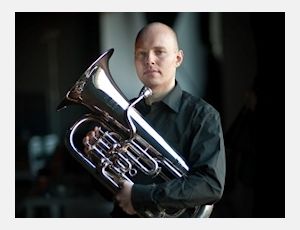Xerxes for Euphonium and Piano
Ensemble - Xerxes (519 BC. - 465 BC.) Was the fourth shah (king) of the Persian Empire from 485 BC. to 465 BC.
This composition was originally written for euphonium and brass. The arrangement for euphonium and piano by Stefan de Hoogt.
Xerxes is dedicated to euphoniumnist Gerd Wensink, for its second phase (master) Conservatory exam.
Xerxes' life story reads like a cruel tragedy full of decay, passion and turmoil. Xerxes was not a maniacal madman like Caligula, but a skilled driver. Obviously Xerxes be killed: as usual for kings of that time.
The euphonium concert is a musical representation of that ancient period. Human development was in a transition area between animal primal instincts and modern civilization. Religious were the Persians also sandwiched between two extremes. The mystical Zoroastrianism was the state religion and emphasized a universal everlasting battle between good and evil.
Xerxes is an administrative beacon, a tower of strength in the swirling turmoil of the orchestra. The euphonium radiates the royal nobility of Xerxes from. The orchestra creates a warm atmosphere, alternating with a sizzling passion, where Xerxes' heart rate as a constant threat throughout the piece remains sound.
In Zoroastrianism there is life after death. The euphonium concert ends with the death of Xerxes. Although he was killed the soul seeping slowly away from the large body of Xerxes. Is that the end? Zarathustra silent. The euphonium player will rise from the dead. The orchestra quietens, the final chord glows ...
The morning sun comes out dark mountains: "Also sprach Zarathustra".
Specifications
| Composer | Alfred Willering |
|---|---|
| Arranger | Stefan de Hoogt |
| Difficulty | E - difficult |
| Duration | 00:10:55 |
| Year of publication | 2012 |
In stock




